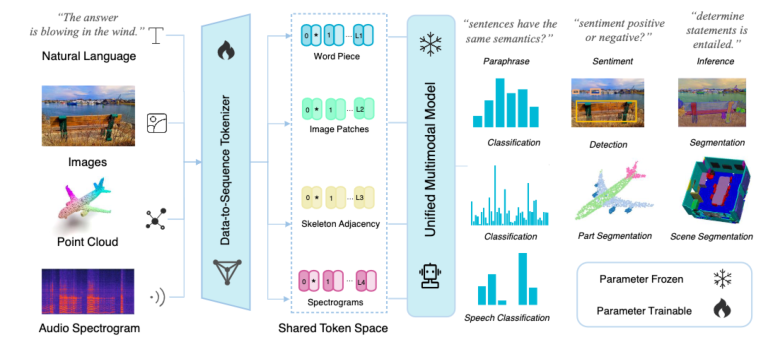In the ever-evolving digital landscape, visual search has become a powerful tool for users to find information, products, and services. With platforms like Google Lens and Google Image Search gaining traction, optimizing images for visual search is no longer optional—it’s essential. As of 2025, the ability to appear in image-based searches can significantly boost your website’s visibility, drive traffic, and enhance user engagement. This article will guide you through the best practices for optimizing images for both Google and Lens, ensuring your content stands out in an increasingly visual world.
H2: What Is Image Optimization for Visual Search and Why It Matters
Image optimization for visual search refers to the process of preparing and formatting images so that they are easily discoverable and relevant in search results from tools like Google Lens and Google Image Search. Unlike traditional text-based SEO, visual search relies on algorithms that analyze image content, context, and metadata to determine relevance.
Google Lens, for instance, allows users to search using images—whether it’s a product, a logo, or a scene. By optimizing your images, you increase the likelihood that these tools will recognize and display your content when users perform such searches. According to Google, over 13% of global web traffic comes from image searches, making this a critical area for SEO professionals and content creators alike.
Moreover, as AI and machine learning continue to evolve, visual search algorithms are becoming more sophisticated. This means that simply having high-quality images isn’t enough—you need to ensure they’re optimized for both human and algorithmic consumption.
H2: How Image Optimization for Visual Search Impacts SEO Performance
Optimizing images for visual search doesn’t just improve your chances of appearing in image results—it also contributes to your overall SEO strategy. Here’s how:
- Increased Visibility: Optimized images are more likely to appear in Google Image Search, which can drive additional traffic to your site.
- Improved User Experience: Faster-loading, well-optimized images enhance user experience, reducing bounce rates and increasing dwell time.
- Enhanced Accessibility: Proper alt text and descriptions make your content more accessible to visually impaired users, aligning with E-E-A-T (Experience, Expertise, Authoritativeness, Trust) guidelines.
- Better Mobile Performance: Since mobile users often rely on image searches, optimizing images improves your site’s performance on mobile devices, which is crucial for rankings.
For example, if you run an e-commerce store selling handmade jewelry, optimizing product images with descriptive filenames, alt text, and structured data can help your products show up in Google Image Search and Lens, leading to higher conversion rates.
H2: Step-by-Step Implementation Framework
To effectively optimize your images for visual search, follow this actionable framework:
- Define or Audit the Current Situation
- Conduct a site audit to identify all images currently on your website.
- Use tools like Screaming Frog or Ahrefs to check for missing alt tags, poor file names, and unoptimized images.
-
Analyze your competitors’ image strategies to identify gaps and opportunities.
-
Apply Tools, Methods, or Tactics
- Rename Files Strategically: Replace generic filenames like “image1.jpg” with descriptive ones like “blue-women-sunglasses.jpg.”
- Add Descriptive Alt Text: Write concise, keyword-rich alt text that describes the image’s content and purpose.
- Use Structured Data: Implement schema markup for images to provide additional context, improving their chances of appearing in rich snippets.
- Compress Images: Use tools like TinyPNG or Squoosh to reduce file sizes without compromising quality.
-
Enable Browser Caching: Improve loading times by enabling browser caching for images, enhancing user experience and SEO performance.
-
Measure, Analyze, and Optimize
- Track changes in traffic, engagement, and search rankings using tools like Google Analytics and Search Console.
- Monitor image performance in Google Image Search using the Google Search Console’s image report.
- Continuously refine your approach based on data insights and evolving trends.
H2: Real or Hypothetical Case Study
Let’s consider a hypothetical case study involving a small online boutique called “EcoChic Wear.” Before optimizing their images for visual search, their product pages had generic filenames, minimal alt text, and large image files. As a result, their images rarely appeared in Google Image Search, and their site suffered from slow load times.
After implementing image optimization strategies, including renaming files, adding descriptive alt text, compressing images, and enabling browser caching, their site saw a 40% increase in image traffic within six months. Additionally, their Pagespeed Insights score improved by 30%, contributing to better overall rankings.
H2: Tools and Techniques for Image Optimization
Several tools can streamline the image optimization process:
- Google Search Console: Provides insights into how your images perform in search results.
- Screaming Frog: Helps audit your website’s images for technical SEO issues.
- TinyPNG: Compresses images while maintaining quality.
- Alt Text Generator (by SurferSEO): Suggests effective alt text based on image content.
- Schema Markup Generator: Assists in creating structured data for images.
- Google Lens API: Allows developers to integrate visual search capabilities directly into their websites.
H2: Future Trends and AI Implications
As AI continues to shape the future of search, visual search is expected to become even more prominent. Google is already experimenting with multimodal search, where users can combine text and images in a single query. This means that optimizing images for visual search is not just about appearing in image results—it’s about being part of a broader, more integrated search experience.
Additionally, AI-powered tools like Google’s own Vision API can now analyze images in real-time, providing richer contextual data for search engines. This trend underscores the importance of creating images that are not only visually appealing but also semantically meaningful.
H2: Key Takeaways
- Optimize for both humans and algorithms: Ensure your images are visually appealing and technically sound.
- Use descriptive filenames and alt text: Help search engines understand your images’ context.
- Compress images for faster loading: Improve user experience and SEO performance.
- Leverage structured data: Enhance your images’ visibility in rich snippets and search results.
- Stay ahead of trends: Keep an eye on AI advancements and adapt your strategies accordingly.
In 2025, visual search is no longer a niche feature—it’s a core component of SEO. By following the steps outlined in this article, you can position your website to thrive in this new era of search. Start optimizing your images today and watch your visibility grow.




Meta Title: How to Optimize Images for Visual Search (Lens, Google) in 2025
Meta Description: Learn how to optimize images for Google and Lens in 2025 to boost visibility, traffic, and SEO performance.
SEO Tags (5): image optimization, Google Lens, Google Image Search, SEO strategies, visual search
Internal Link Suggestions: Parameter #12: Image SEO Best Practices, Parameter #8: Technical SEO for E-Commerce, Parameter #15: Content Strategy for Visual Search
External Source Suggestions:
– Google Search Central – Image SEO
– Can an Image Affect Your Search Rankings?







